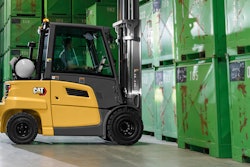
In recent months, the vital race to reach net zero emissions has gained significant momentum. In the past year alone, net zero commitments from governments and private industries have doubled, with large corporate players setting the most rigorous standards.
As companies lay out their sustainability policies or corporate social responsibility (CSR) initiatives, it is crucial they ensure supply chains are compliant with their targets. The reality is that corporate or industrial operations are now responsible for their entire supply chain, so business leaders need clear oversight to hold partners accountable for greenwashing. One example of this includes suppliers that claim to be green by using renewable energy but aren’t working to offset their business’ carbon footprints.
With “greenwashing” accusations against companies intensifying, organizations must monitor this to guarantee they are creating genuine value with their sustainability policies and progressing toward their goals. Yet, managing both global and local supply chain operations can be a complex, time-intensive task. In fact, managing supply chain disruptions in 2020, such as the Coronavirus disease (COVID-19) and geopolitical tensions, cost U.S. and European businesses up to $4 trillion. Despite these challenges, the climate crisis is more urgent than ever, and businesses simply cannot afford to be held back by suppliers in their green transition.
So, looking ahead, what are the signs that supply chain leaders can watch out for to prevent greenwashing in their network of partners? And, are green technologies, particularly those powered by artificial intelligence (AI), the answer to weeding out greenwashing from supply chains and achieving long term net-zero success?
How to recognize greenwashing in your supply chain
Customer bases are more conscious of sustainability than ever before; 43% of consumers are actively choosing brands whose environmental values align with their own and they won’t hesitate to switch to a competitor if one doesn’t. For consumers, the actions of a business’s partners reflect on the business itself, so companies must be vigilant.
To identify greenwashing in their supply chains, organizations can look into the motivations behind suppliers’ green choices. For instance, if their priority is to save money rather than save the environment, it’s important to question the long-term sustainability of the decision. While it is vital to realize sustainability in all senses of the word, including economic, environmental and infrastructural, the best investments must balance all these factors appropriately. In addition, a supplier that overstates the value of a sustainable product or service without offering information to validate them is also a red flag.
Demystifying the supply chain is more than achievable with innovative, AI-powered green technologies. Through integrating data feeds from satellite providers, AI is capable of detecting and predicting anomalies from suppliers. By analyzing continuous data streams, AI technology notifies businesses of any unexpected problems, providing a greater understanding of risk and authenticating the sustainability of a whole supply chain.
The benefits: Truth and transparency
Large or medium scale businesses often require complex, global supply chains, furthering the need for a single, unbiased version of the truth. Employing an advanced, AI-enabled platform provides a transparent and simplified process for reaching sustainability targets. AI-based predictions leverage numerous audit trails and data sources to recognize shortfalls, mitigate potential risk, and guarantee compliance. For example, they can prove suppliers are using green energy across various regulatory markets and deliver clear oversight – with data and knowledge graphs – to relevant stakeholders.
Furthermore, AI and machine learning algorithms can identify potential disruption that may have a physical impact on supply chain operations, such as flooding or earthquakes, for example. When supplemented with climatic data, AI algorithms are able to correlate demand with seasonal variations to predict potential outages in real-time. Sophisticated modelling also simulates price dynamics and events to demonstrate the economic and commercial outcomes of various scenarios. Ultimately, by using AI technologies, supply chain leaders can gain actionable insights to ensure that all partners align with corporate green targets.
The future: Safeguarding sustainability
Keeping an eye on long-term sustainability is critical when removing greenwashing from supply chains. The real-time intelligence offered by AI provides companies with short and long-term predictions, alongside the prescribed actions mentioned above. Moreover, the transparency green technology affords businesses helps to build a mutual understanding of goals and a unified approach to achieving them.
Although business decisions are often influenced by a range of perspectives and interest groups, owning clear insights into the outcomes of the supply network helps to form a balanced strategy that answers all needs. From green energy to responsible consumption and production, AI allows companies to cross-reference and quantify results across interconnected goals and targets. In this way, an organization can effectively safeguard its sustainable commitments and guarantee its suppliers comply with its green standards.
As greenwashing is counterproductive to true sustainability, businesses must carefully monitor and optimize their supply chains, so all partners support their policies. AI technology is essential for gaining transparent, real-time intelligence into the outcomes of suppliers’ green decisions, verifying their compliance with a business’s own initiatives and making informed actions that maintain positive impact. Only with these sophisticated analytical and predictive capabilities will organizations be able to achieve genuine sustainability in all of its forms.


















